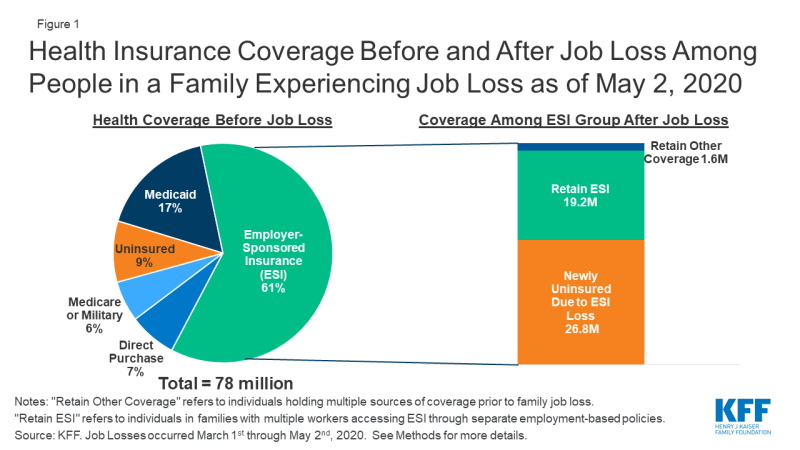27 Million No Longer Have Health Insurance – How Will That Affect Your Optometry Practice?
The COVID-19 pandemic has left an indelible mark on virtually every aspect of life, including the healthcare industry. One of the most significant impacts has been the dramatic rise in the number of uninsured Americans. According to recent estimates from the Kaiser Family Foundation, approximately 27 million people have lost their job-based health insurance since the pandemic began (source). For optometrists and other healthcare providers, this creates new challenges. What does this sudden surge in uninsured individuals mean for your practice? More importantly, how can you adjust your operations to meet the needs of this growing demographic?
The Growing Crisis: How the Uninsured Population Impacts Healthcare Access
When people lose access to health insurance, it often leads to delays in seeking medical care. Eye care, which is sometimes perceived as less critical than other forms of medical treatment, is particularly vulnerable to being postponed or skipped altogether. Routine eye exams, treatments for non-urgent conditions, and even necessary eyewear purchases may be put on hold by patients who can no longer afford them. This can lead to worsening eye conditions for patients and a significant decline in patient volume for optometrists.
Understanding this shift is crucial for optometrists who are looking to maintain or grow their practices in the face of this new reality. Below are seven strategies to help you navigate the current healthcare landscape and continue providing essential care to your patients.
7 Ways Optometrists Can Adjust to the Rise of the Uninsured Population
1. Improve Your Online Presence: Patients Without Insurance Still Research Providers
With more patients becoming budget-conscious, your practice’s online presence has never been more important. Many uninsured patients will shop around for the best options. Ensure your website is up-to-date, optimized for search engines, and highlights any services or payment plans you offer that can assist uninsured or underinsured patients. Providing educational content on your website, such as blogs or videos about the importance of regular eye care, can help draw patients in despite financial limitations.
2. Audit Your Listings: Ensure Accuracy Across Platforms
Your online reputation is crucial when patients are comparing healthcare providers. Make sure your practice is accurately listed on all local directories and review sites. These platforms can influence patient decisions, especially those without insurance who are looking for trusted providers. Inaccuracies in your practice’s information could result in missed opportunities to serve uninsured individuals who are seeking affordable care options.
3. Boost Your Social Media Engagement
Social media can be an inexpensive yet powerful tool for engaging with both new and existing patients. Regularly post about your practice, patient success stories, and tips for maintaining eye health. Consider focusing on platforms where your target audience, including uninsured individuals, are most active. You don’t need to post daily, but maintaining a consistent schedule will keep your practice top of mind and increase patient engagement.
4. Offer Flexible Payment Options
The uninsured population is likely to avoid eye care services due to cost concerns. By offering flexible payment options—such as extended payment plans, sliding scale fees, or discounts for self-pay patients—you can make care more accessible. This not only helps patients receive the treatment they need but also allows you to maintain patient volume and revenue. Make these options clear on your website and during patient consultations.
5. Evaluate Your Competitors
It’s important to keep tabs on how your competitors are adapting to the rise of uninsured patients. Do they offer special payment plans or telehealth services? Are they implementing new marketing strategies to attract patients? By understanding what others in your field are doing, you can identify opportunities to improve your own offerings and stay competitive.
6. Enhance the In-Office Experience
Your in-office experience must reflect the level of care and attention you want patients to talk about online. Train your staff to provide an excellent patient experience, even in challenging financial situations. By creating a welcoming, compassionate environment, you increase the likelihood that uninsured patients will continue to seek care at your practice, and potentially refer others to you.
7. Actively Ask for Reviews
Patients without insurance may rely heavily on online reviews when deciding which healthcare provider to trust. Encourage your satisfied patients to leave reviews on platforms like Google or Yelp. Positive reviews can help build your practice’s reputation and attract new patients, including those who have lost their health insurance. Make sure to personally respond to both positive and negative reviews to show you value patient feedback.
Adapting to the Future of Healthcare
The COVID-19 pandemic has reshaped healthcare in many ways, and the rise of the uninsured population is one of the most significant challenges facing optometrists today. To navigate this new landscape, your practice must adapt by offering flexible payment options, maintaining a strong online presence, and ensuring that your in-office experience is second to none.
While the current situation may seem daunting, it also offers an opportunity to reinvent how you serve patients. By proactively meeting the needs of the uninsured population, you can continue to grow your practice while providing essential care to those who need it most.
Conclusion: Turning Challenge into Opportunity
The healthcare landscape has shifted dramatically, and the loss of health insurance for millions of Americans presents both challenges and opportunities for optometrists. By adapting your practice to accommodate uninsured patients through flexible payment plans, enhanced social media engagement, and a positive patient experience, you can ensure your practice thrives even during uncertain times.
What strategies are you implementing to navigate these changes? Share your experiences and tips in the comments below!
For more insights on how to adapt your optometry practice during uncertain times, feel free to check out the full report from the Kaiser Family Foundation here.







Responses